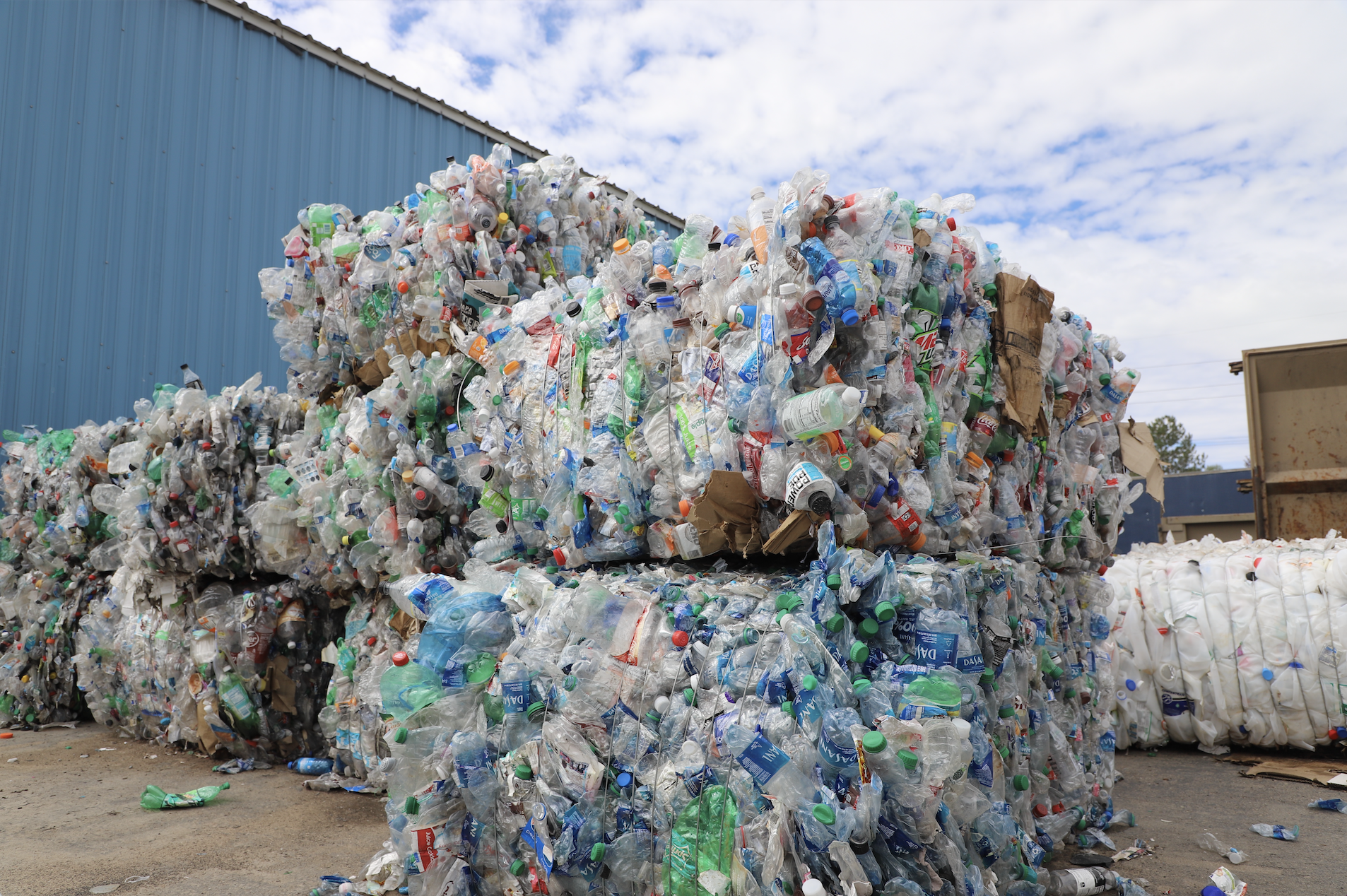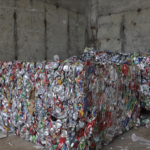
From the blue bin to the packaged bales, BYU’s recycling process starts and ends on university grounds — with the help of the campus community.
BYU recycles about 1,400 tons of paper, plastic and metal per year, according to the BYU Sustainability webpage. Along with environmental benefits, it’s an operation that “saves the university tens of thousands of dollars in disposal costs and generates revenue from the sale of recycled commodities,” the website also says.
According to Heather Phipps, the process begins with everyday disposal decisions.
Phipps is a BYU senior studying Environmental Science and Sustainability and works as a Student Sustainability Coordinator in the Sustainability Office.
Phipps said that when she was coming into BYU as a freshman, she was surprised at just how inaccessible recycling bins were. After coming home from her mission, she joined the “Tour de Bins,” a pursuit to put more recycling bins on campus, run by the Student Sustainability Initiative at the time.
The “Tour de Bins” was a success. Now, according to BYU Media Relations Manager Todd Hollingshead, there are thousands of recycling bins on campus — separate bins for cardboard, office paper, plastic bottles and aluminum cans.
Once recycled materials are in the blue bins, building care staff pushes in wheeled trash carts with multi-colored compartments to collect them.
BYU student Damon Bullock has worked as a custodian for two years and currently works in the Eyring Science Center and the Martin Building.
“In the Eyring Center, we go around every day with a trash cart,” Bullock said. “We get all the trash in the whole building and then take it out to the dumpster.”
Bullock demonstrated that the cart is separated into individual compartments for each type of recyclable: bottles, paper, aluminum cans, newspaper and copy paper. He said in his experience, people are usually good at putting the correct items in the correct bins, with the exception of a few straggling pieces.
“A few people just kind of throw it in whatever recycling bin they see, but we fix that when we move it to our carts,” Bullock said.
After the custodial staff moves recyclables to the dumpster, recycling staff picks it up and transports it to the BYU Materials Handling Center, where full-time and student staff sort the recyclables from campus by hand, according to Hollingshead.
Once the sorting process is done, the baling process begins.
The Materials Handling Area houses a mountain of cardboard that is tied up with twine and baled. Piles of paper are run through shredders and cans and bottles are smashed flat, then they get put into bales, too.
“The baled recycling is eventually sold to interested manufacturers,” Hollingshead said.
Phipps said she sees the BYU recycling process as an act of stewardship, and an opportunity to “go forth and serve.”
She encouraged students to see stewardship as a muscle they should flex so that it builds strength. Recycling, she said, is a way that many students flex that muscle daily.
“It helps the earth. It helps our air quality. It helps everyone around us,” Phipps said. “If we can really learn those acts while we’re here at BYU, when we go forth and serve in different communities, we’ll know how to serve like stewards.”








